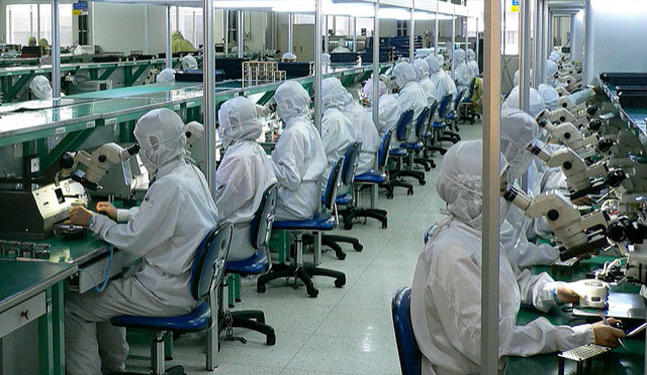The Taiwanese manufacturing giant Foxconn which assembles iPhones is planning to invest 2.5 thousand crores to assemble the iPhone X series in Tamil Nadu. The move will create 25,000 jobs in the country and make India a manufacturing hub of smartphones across the segments. Earlier the lower-cost SE and 6S models of iPhone used to be assembled in India through Wistron’s Bengaluru unit. Foxconn has assembled iPhones in China since their initial release in 2007 and therefore moving to India is a major development for Foxconn, Apple, China and most importantly India. Foxconn has a manufacturing unit in Sriperumbudur town in Tamil Nadu and additional investment will be made in this plant to assemble iPhones.
Apple fears that US-China trade war could hurt its manufacturing units based in China. “Widening iPhone manufacturing in India through Foxconn will allow Apple to hedge the risk of any new U.S. trade policies,” said Navkendar Singh, an associate research director at International Data Corporation. Given the large population base and low per capita income, India could become an ideal destination for manufacturing but the regulatory cholesterol, stigmatized capitalistic policies of the government was hampering the growth of manufacturing. Now the positive response by the government is helping the ‘Make in India’ mission of PM Modi.
India has overtaken the United States of America to become the 2nd largest manufacturer of smartphones in the world, trailing China. Make in India has turned the tide in India’s favor making India a global hub for manufacturing which is the principal aim of the ‘Make in India’ Policy. In 2014, there were only 2 manufacturing units in India but since the launch of ‘Made in India’ which propelled the scene in an impressive manner, the number has increased to 123 units in 2017. “Most global handset brands and manufacturers are eyeing India, which is the world’s fastest growing Smartphone market, having overtaken the US last year to become the world’s second largest Smartphone market after China,” ICEA chairman & national president, Pankaj Mohindroo, said in a media statement.
The reason behind this is that the rising per capita income and prosperity in China have increased labor cost very rapidly. Manufacturing in India is cheaper as land and labor cost in the country is low compared to China. The Chinese Smartphone market has saturated so there is a slowdown in the domestic market. On the other hand, the smartphone penetration in India is still at 30 percent. The rising income of the youth will push the smartphone demand in the country, so most smartphone companies want to set up the manufacturing units in India before their competitors as this will give them an edge in tapping the domestic market.
The Chinese companies find it more cost efficient to manufacture in India. Foxconn, the Taiwanese manufacturing giant has also signed an agreement with the state government of Maharashtra, Uttar Pradesh, and Haryana to invest five billion dollars. Acer’s spin-off manufacturing arm Wistron announced agreements with Indian government officials to rent land for local production purposes. The electronics manufacturer, Samsung, Toshiba, Panasonic, and Sony are considering cuts in their investment in China and set up factories in India. So the woes of Chinese manufacturing is not limited to Smartphone companies, it is widespread across all the sectors. As Trump’s ‘Made in America’ rhetoric translates into action, further woes to manufacturing in China is expected. But one thing the Indian government should keep in mind that it has to focus more on land and labor reforms if it wants to take advantage of the big manufacturing move from China to India.































